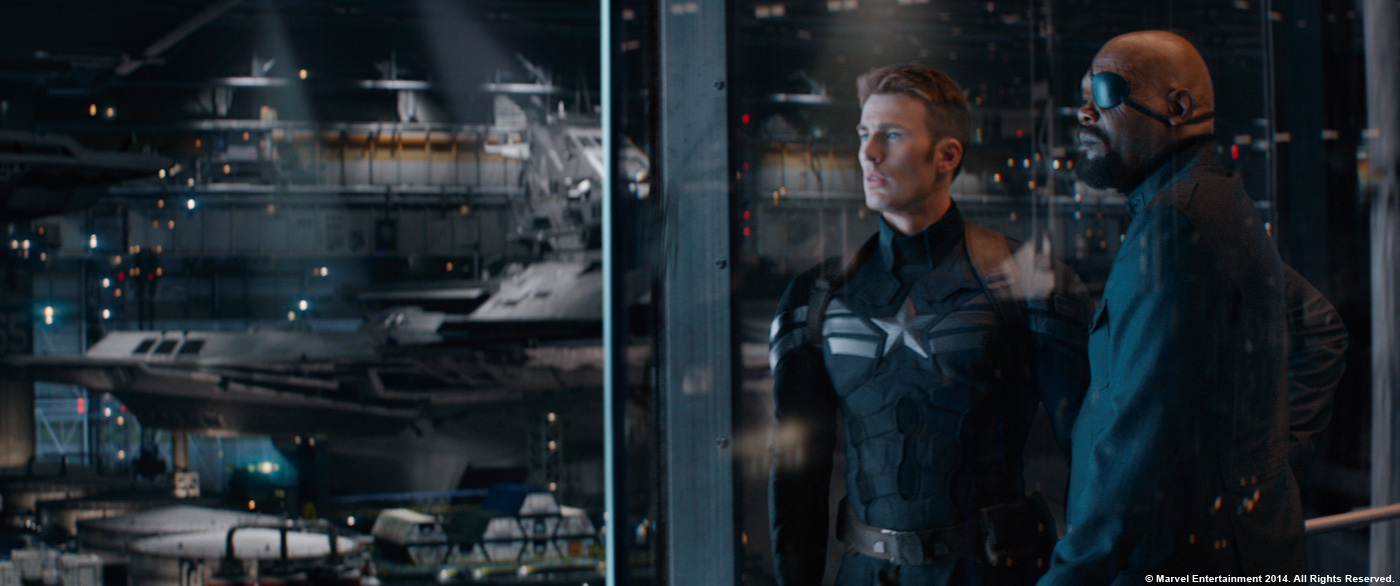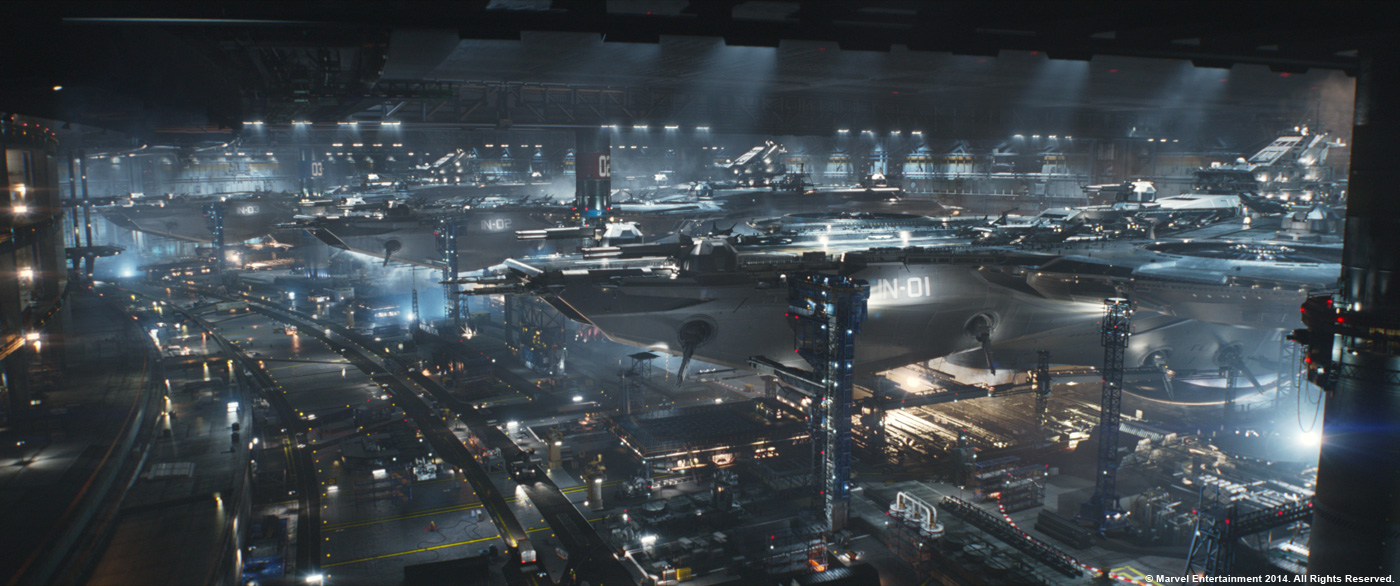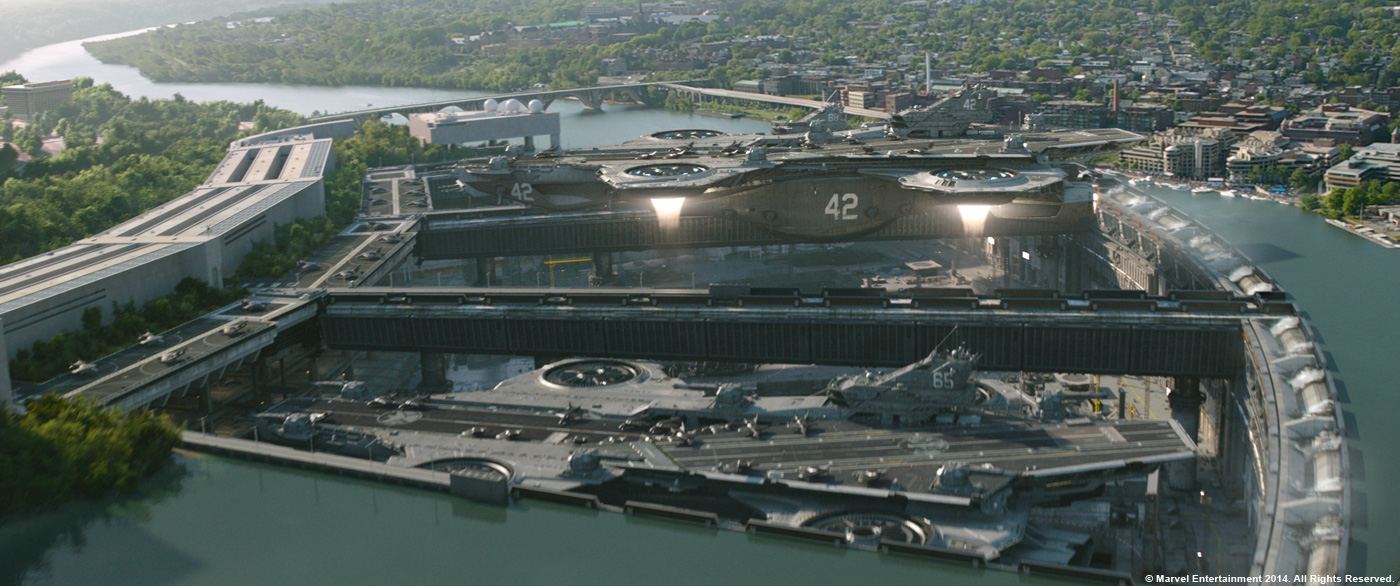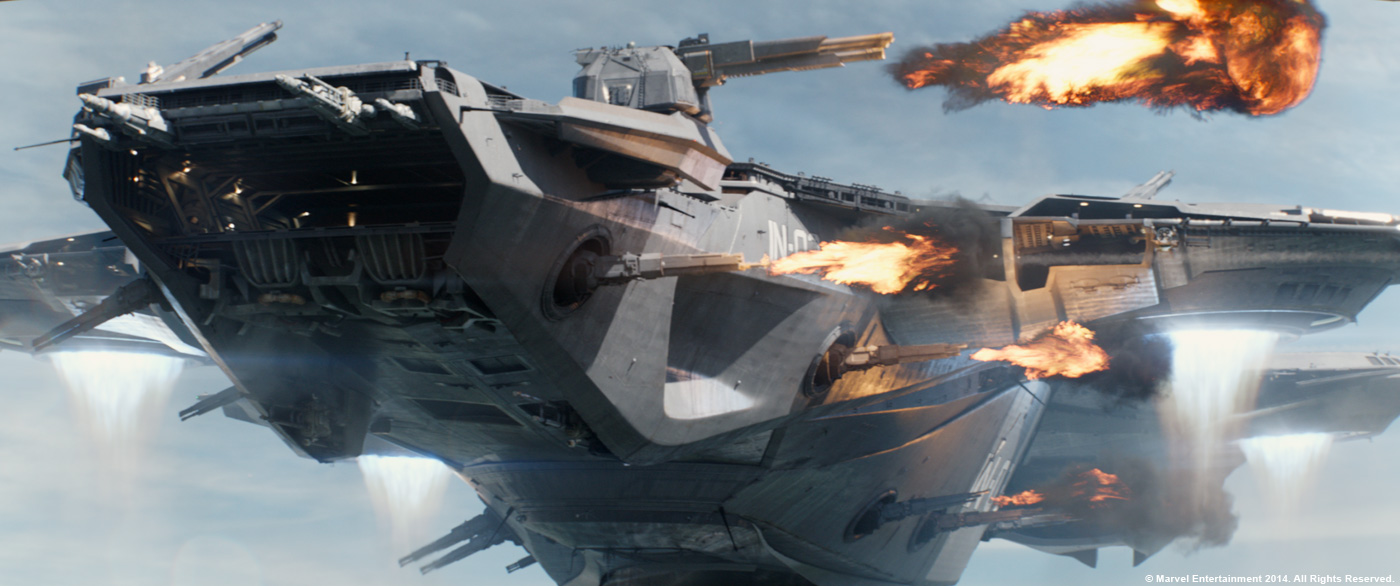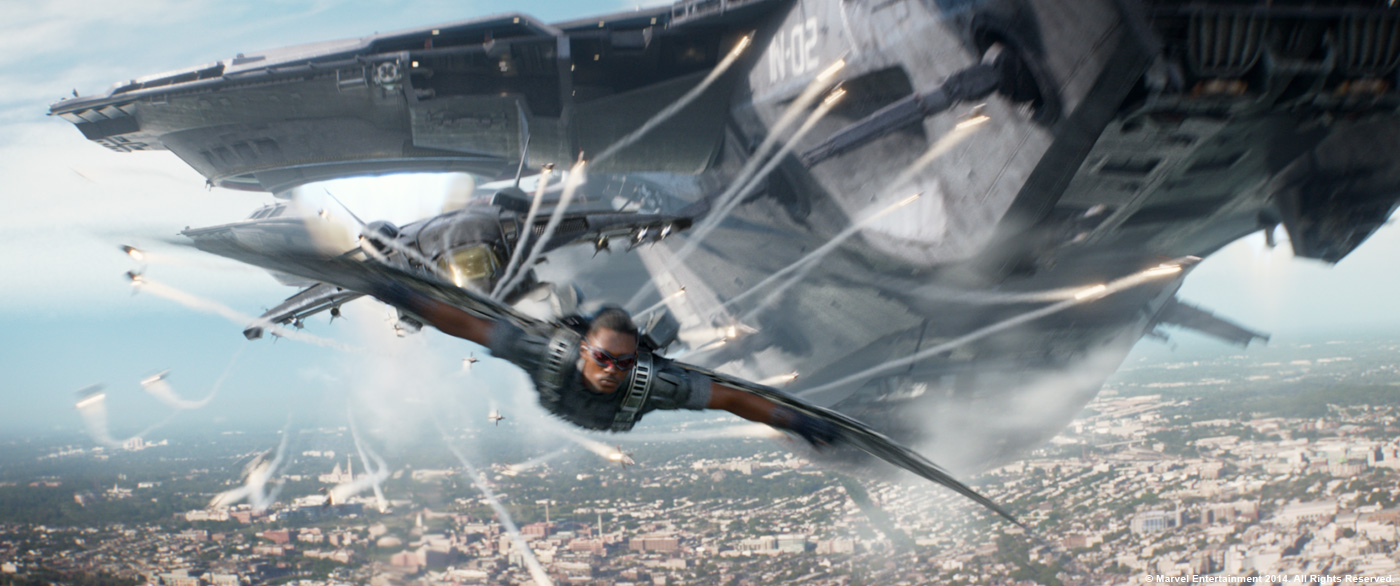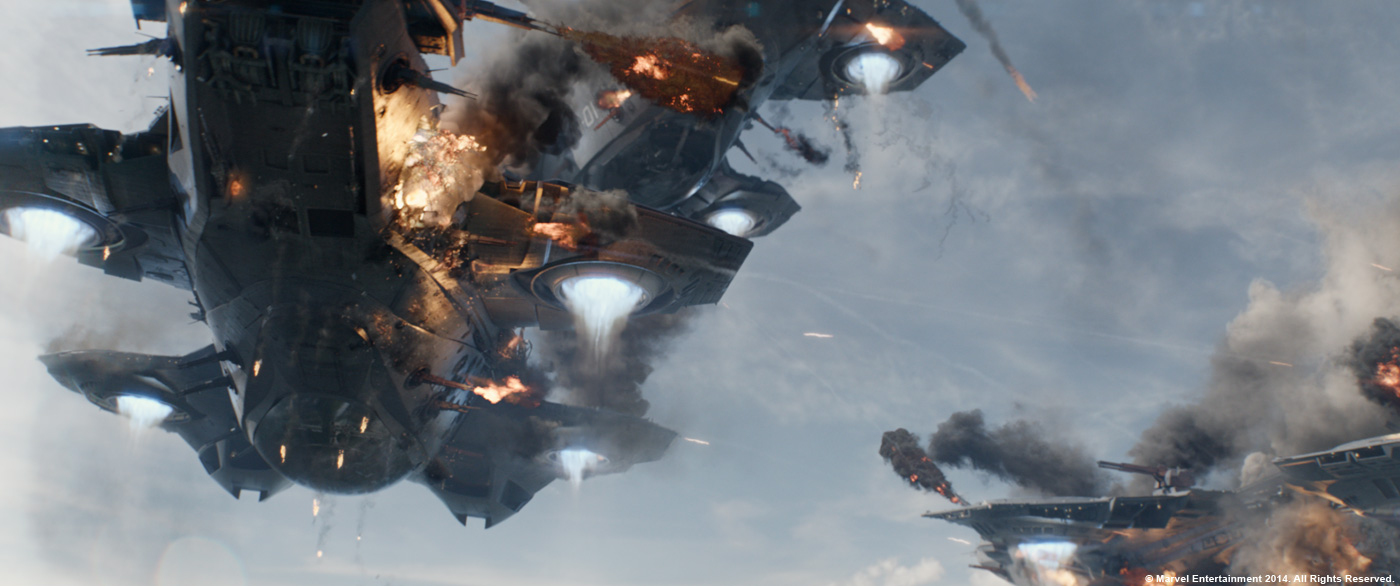After working with Douglas Trumbull as traditional model maker, Russell Earl joined the teams of Industrial Light & Magic in the beginning of the 90s. He worked on many projects such as DRAGONHEART, DEEP IMPACT, STAR WARS: EPISODE I – THE PHANTOM MENACE and MEN IN BLACK II. As VFX Supervisor, he took care of the effects for movies like TRANSFORMERS, RED TAILS, STAR TREK and SUPER 8.
What is your background?
I used to build classic furniture reproductions. That led me to study Industrial Design at Rhode Island School of Design. I always had an interest in film and computers, and while there, I got an internship at Video Image (which later became VIFX) where I worked designing and implementing screen graphics for playback. With a taste of the business I was hooked. Once I graduated, I started working as a traditional model maker working for Doug Trumbull on a series of ride films he was doing. When all the shooting was completed, I wrangled my way into the Digital Compositing department. And when that project ended, I was fortunate enough to a job at Industrial Light & Magic.
What was your feeling to enter in the Marvel universe?
The Marvel Universe is a great place to be. It has such a deep and rich history and I was very excited to get the opportunity to work on this particular film where the Winter Soldier and Falcon make their on screen debut. Marvel put together a great team that was incredibly collaborative and creative and that made the entire process a fun and rewarding one.
How was your collaboration with directors Anthony and Joe Russo?
Joe and Anthony are great guys, very down to earth; they know what they want and how to communicate it. Working with them was a true collaboration, we could talk about the work, and bounce ideas back and forth, and ultimately put their vision onto the big screen.
What was his approach about the visual effects?
They approached the effects as they did the rest of the film, it was all about story telling and feeling. From the very beginning the brothers wanted everything to be grounded in reality (with creative freedoms of course). This meant that we needed to stay as true to possible to real world physics. For example, things like the new guns on the ship are less sci-fi, and had more of a World War II feeling – we were 90% old school, 10% sci-fi. Falcon’s wings needed to look and feel believable, and cool, not so much magical and fantastical.
How did you work with Production VFX Supervisor Dan DeLeeuw?
Dan and I got along well from day one, and really seemed to be on the same page. Again, he is a collaborative guy, and we would look at the work, and discuss it at length. We would exchange ideas, swap reference, and work together to achieve the look the directors were after. It happened a number of times, where we would talk about the look of a shot, or a weapon, and we would end up pulling the same reference off the web… that’s always a good sign! Together, we really pushed to bring something awesome to the screen.
What was your role on this project?
I was the Visual Effects Supervisor for Industrial Light & Magic, so I was responsible for all the shots ILM took on.
Can you describe to us one of your typical day on-set and during the post?
A typical day on set, always starts with the prep the night before, knowing the schedule, and being prepared to capture what you need “on the day”. First up (after a cup of coffee of course), is usually a quick meeting to discuss the first shots up, with the AD, Directors, DP, and other department heads. We would come up with a shot list, and a plan for the day, and spend the day getting each of the required shots. We worked closely with Trent Opalach the Director of Photography, to get what we needed to make the shots happen. A typical day could start at 6am and go well into the evening.
For a typical day in post, we get in early and review the work that ran overnight. We would have dailies at 9am, where the entire team meets in one of our theaters and reviews the shots. We get feedback to artists, talk about what’s working in the shots, and what isn’t. We talk about what would bring the shots to the next level and what we might need to facilitate that. We would try to keep dailies fun and move them along. At the peak of shot production we had 150 shots plus to review each morning. After dailies, into more shot reviews, and turnovers, planning what’s next. After lunch we would have client calls, and show the filmmakers our latest iterations… then off to nightlies around 4pm to give feedback. The day is all about getting the team the feedback they need to keep the shots moving forward, and pulsing out the shots as much as time allows. After nightlies, we have dinner in the office, followed up by more desktop reviews, hopefully to be out the door in time to catch some sleep and do it all again the following day.
How did you design the new helicarriers?
Our model supervisor Bruce Holcomb was instrumental in the design as well as Alex Jaeger, ILM’s visual effects art director. We had concept art from the client that showed the new articulating thrusters, big guns and surveillance hub. We looked at a lot of reference of battleships, and aircraft carriers, and large guns, as well as new materials, and future weapons. With THE AVENGERS helicarrier as a starting point we re-contoured and re-worked much of the original design to incorporate the new elements, as we were making the updates we would do 2D artwork that we would show to the Dan and the directors for approval. From that, we’d get notes and incorporate those notes back in… Things like “bigger”, “less sci-fi”, “cool”! It was an iterative process that we just went back and forth on until everyone was happy.
Can you explain in details about their creation?
We made changes to every aspect of the ships. The biggest changes were in the ‘weaponization’ of the carrier, adding the big tri-barrel battleship-sized guns, and the addition of the ‘surveillance hub’ on the underbelly. We re-contoured it in places, added armor, and completely changed the paint scheme and textures.
The carriers were modeled in Autodesk Maya and painted in our proprietary paint program within Zeno. In terms of technical stats, each carrier (pre-destruction) had the following
– 17,186,594 Verts
– 16,425,918 Faces
– 19,522,302 UV’s
– 22,283 individual objects (polys).
There’s a moment when Nick Fury brings Captain America into the underground Shield facility. How did you approach this huge environment?
Johan Thorngren supervised the helicarrier hanger environment. It’s a massive space. We looked at lots of reference like the building where they assembled the space shuttles, and airplane factories, as well as big ship building facilities. We started with a concept from the production art department and just started building from there. We built it in a number of different sections due to the insane amount of detail. We had the main Triskelion building itself, the island and the trees, the river, Rosslyn (the city opposite DC) and the DC side.
Can you tell us more about its creation?
The “helicarrier bay” as we called it was built beneath the Potomac River, at the base of the Triskelion with a series of extremely large doors holding out the water out from above. It sits in about 10 feet of water with some floodgates at the perimeter. It was modeled painted in Autodesk 3DS Max by a team of about six people on and off. It was a huge undertaking.
In the final battle, the helicarriers emerges from the water. How did you created this CG water?
We used a combination of tools. The water and particles were rendered with our proprietary fluid simulation package.
How did you approach the huge final battle sequence?
The final battle was a huge sequence, and we knew we would have to get started on it right away as we had to deliver one of the most difficult shots in the film for Comic-Con. This was both good and bad. The bad was we had to get the shot done for Comic-Con, the good was it forced us to figure a lot out early on, and we really found the pain points and what we needed to change to get the film done.
One of the first things we did was go through the previs, and map out all the shots, which carrier was which, where they were, and we made a spread sheet detailing out all the hits and damage that progressed throughout the sequence. A lot of careful planning went into the chaos that ensues on screen. We then blocked out the cameras and anim, and got started on the simulation FX work right away. We knew we had to be efficient, so we wanted to block in all the fire, smoke and particle FX before we got too carried away with tricking out all the carrier internals. We focused our time and energy into what would ultimately end up in the final shots. There was a lot going on in compositing as well, led by our compositing supervisor Francois Lambert. I think he was one of the few people that came close to touching almost every shot.
Have you created previs for this sequence?
We started with the previz from Proof Inc., and built off that, as the movie evolved so did the shot design, but the previs was always a starting place. We also did some of our own previz and postviz on a bunch of shots. All shots that came in would go through our internal Layout department, supervised by Tim Dobbert, our resident master of layout. He would work with the team to convert the previs, and then sweeten it. In some cases we would rework things, or change the shots as needed or as they evolved editorially.
Can you tell us more about your work on Falcon?
Falcon was a lot of fun to work on. We built a really detailed digital double that we used in all kinds of shots. Typically you would use a double for wide or mid-ground shots, which we did, but we also utilized our double for all CG close-ups on some of the action, where he deploys his guns off his hips is a good example of this.
What was the main challenge for the animation of Falcon?
Falcon had a few unique challenges, all of which involved him just feeling iconic. Our animation supervisor Steve Rawlins led the effort and he and his team started doing wing and flight studies very early on. First we had to solve technical challenges in getting his wings to deploy and fold up into his backpack. We also had the challenge of making him feel like he is really flying, and not just a guy on wires. At the same time, the most important thing was to keep him heroic and get him to strike some of his classic Marvel comic book poses. Dan Deleeuw sent us a ton of great classic Falcon poses that we were always referring to as we animated the shots.
There are many explosions in the final battle. Can you tell us more about those and the use of ILM’s Plume?
We used a lot of ILM Plume! (Our proprietary high-speed FX simulation and rendering tool) In addition to all the explosions from the firing, we had the gun muzzle blasts as well. Some of the shots had upwards of fifty individual Plume simulations, it was a real challenge, but we had a great TD/FX team led by Dan Pearson, who knows this stuff inside and out, and has a great eye to be able to achieve the look we were after which was a take on the large World War II era 16″ battleship guns.
Did you use ILM’s Fracture tool for the destruction that happens in the helicarriers and with the S.H.I.E.L.D building?
I think we used every tool in ILM’s arsenal. Our simulation supervisor Kaori Ogino led the team using Fracture and our internal simulation engine on the carrier destruction and on the building interior shots. On the exterior Triskelion shots we used some 3DS Max tools, some proprietary tools and a few other packages. We went that route so as to keep the destruction primarily in the same package as what we were using to create the environments.
What was the biggest challenge on this project and how did you achieve it?
Biggest challenge was the amount of detail in every aspect of the shots. From the Triskelion (Building) through to the digital doubles, and Helicarriers. We had wide shots, and closeup shots on all our assets, and we had to destroy them all as well, so we saw interior detail too! We achieved it by being really careful about what we were seeing in each and every shot, and spent a lot of time up front mapping out all the shots and each level of damage, etc. We also tried to get all aspects of the shots going early on, meaning that we were running explosion and smoke sims at the same time we were modeling out the interiors. We didn’t want any wasted effort and wanted it all to show up on screen.
Was there a shot or a sequence that prevented you from sleep?
HA! We had a really solid team here, and if they weren’t worried I wasn’t worried. One of the great things about ILM is that the artists are so strong. There really isn’t a problem that can’t be solved collectively. The big destruction shots kept me on the edge of my seat, just due to the sheer amount of data that needed to be pushed around. There are always creative problems that keep you awake at night too, thinking about what would make the shots really cool. We are always trying to raise the bar and do things that haven’t been seen before. For the most part the laying awake was more of a positive thing, thinking about what could be and less about worrying about how we were going to get the show done.
Have you split the work amongst the various ILM offices?
Yes, we split the work between our studio here in San Francisco and our studio in Vancouver. We are all working off the same network, the same pipeline and the phones, conference rooms and theaters are all wired together, so it’s as if we are all her together. We worked as one team to get the work done. We also worked with a Base FX, a partner we had worked with many times in the past.
What do you keep from this experience?
I wish it weren’t over! We had a lot of fun. It was a great team, and I am proud of the work we accomplished together. That and I can keep the poster and maybe a few gray hairs!
How long have you worked on this film?
I worked on the film for just under a year and a half, from my initial conversations with the team until the last shot delivered.
How many shots have you done?
In total ILM had 919 shots, although some of them were omitted from the final edit of the film.
What was the size of your team?
Across all disciplines we had over 200 people working on the film throughout production. Jeanie King our visual effects producer, led the incredible production team and kept us all going strong. We could not have done this without her. The entire team at ILM, each and every artist, went above and beyond on this film and I am thankful to them all for the hard work they put in. Job well done.
What is your next project?
I’m not sure just yet. I am helping out with a few projects here and there, and looking at potential new projects coming in.
What are the four movies that gave you the passion for cinema?
Hard to name just four…but here goes:
THE GREAT ESCAPE,
INDIANA JONES,
STAR WARS,
ROCKY,
and BACK TO THE FUTURE.
A big thanks for your time.
// WANT TO KNOW MORE?
– Industrial Light & Magic: Official website of ILM.
© Vincent Frei – The Art of VFX – 2014


